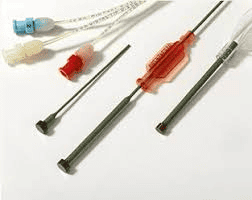This is one material that has use in both external and internal equipment that is regularly used in the medical industry. PTFE is an extremely popular material for many uses, including catheters, surgical instruments, guidewires, and much more. Among its medical uses, PTFE offers some unique characteristics, such as low friction and good electrical insulation. In addition, it also has excellent chemical and thermal resistance. Also, PTFE offers low tensile strength and is resistant to creep and radiation. This makes PTFE ideal for many medical applications. Find out more about PTFE Coating for your products by going to https://www.poeton.co.uk/standard-treatments/electroless-nickel-ptfe/
PTFE is an excellent non-stick coating for many products, including cookware and other medical instruments. It is also widely used in pipework and containers for highly reactive or corrosive chemicals, as it reduces wear and friction and improves energy efficiency. In addition to its non-stick qualities, PTFE can be used for a wide range of medical applications, including graft materials. PTFE grafts can be used to bypass stenotic arteries in patients with peripheral vascular disease. Although it is an incredibly versatile material, it is also highly resistant to chemicals and heat.
PTFE sheets are often used as measuring heads in optical radiometry. They diffuse light nearly perfectly, and their optical properties remain constant over a wide range of wavelengths. Infrared light, for instance, radiates, enabling measurements of solar irradiance. In addition to its optical properties, PTFE sheets have other useful properties, such as preventing the formation of smudges.
PTFE is a suitable material for medical uses due to its high levels of biocompatibility and inert properties. The material is also widely used for non-internal applications including stethoscopes and drainage tubes, as well as internal use in the case of catheters.
PTFE can be cross-linked by radiation. This cross-linking process increases PTFE’s mechanical and radiation stability. In addition, irradiation at ambient conditions is a method for breaking down PTFE and reusing it.
One of the most important reasons why PTFE is so widely used in medical devices is its lubricity. Its coefficient of friction is only 0.2. PTFE is the most lubricious polymer, followed by FEP and hexafluoropropylene. Other applications of PTFE include catheters, infusion pumps, and syringes. PTFE is often used in diaphragm pumps, which are capable of handling aggressive, chemically-reactive fluids. This material can be used in diaphragm pumps, which are commonly used in hospitals for post-surgery convalescence.


